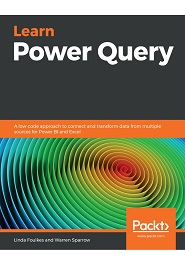
English | 2020 | ISBN: 978-1839219719 | 428 Pages | PDF, EPUB | 533 MB
Discover how you can combine data from various sources to create data models to suit your business requirements with the help of this clear and concise guide
Power Query is a data connection technology that allows you to connect, combine, and refine data from multiple sources to meet your business analysis requirements. With this Power Query book, you’ll be empowered to work with a variety of data sources to create interactive reports and dashboards using Excel and Power BI.
You’ll start by learning how to access Power Query across different versions of Excel and install the Power BI engine. After you’ve explored Power Pivot, you’ll see why Excel users find it challenging to clean data in Power Pivot and learn how Power Query can help to tackle the problem. The book will show you how to transform data using the Query Editor and write functions in Power Query. A dedicated section will focus on functions such as IF, Index, and Modulo, and creating parameters to alter query paths in a table. You’ll also work with dashboards, get to grips with multi-dimensional reporting, and create automated reports. As you advance, you’ll cover the M formula language in Power Query, delve into the basic M syntax, and write the M query language with the help of examples such as loading all library functions offline in Excel and Power BI. Finally, the book will demonstrate the difference between M and DAX and show how results are produced in M.
By the end of this book, you’ll be ready to create impressive dashboards and multi-dimensional reports in Power Query and turn data into valuable insights.
What you will learn
- Convert worksheet data into a table format ready for query output
- Create a dynamic connection between an Access database and Excel workbook
- Reshape tabular data by altering rows, columns, and tables using various Power Query tools
- Create new columns automatically from filenames and sheet tabs, along with multiple Excel data files
- Streamline and automate reports from multiple sources
- Explore different customization options to get the most out of your dashboards
- Understand the difference between the DAX language and Power Query’s M language
Resolve the captcha to access the links!